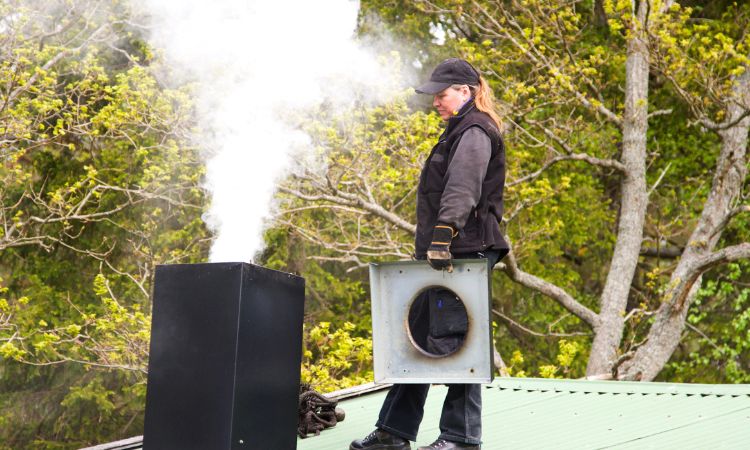Chimney Creosote Removal El Paso, TX
Call for a Quote
(915) 266-0067
All Services
Creosote Removal: The Key to a Safe and Efficient Fireplace
Introduction
Creosote is a flammable substance that forms when wood burns, and it can quickly build up in your chimney if not properly maintained. Creosote buildup is one of the leading causes of chimney fires, which is why regular creosote removal is essential for fireplace safety. In this article, we’ll explore why creosote removal is critical, how it’s done, and how you can prevent dangerous buildup.
What is Creosote and Why Does it Build Up?
Creosote is a byproduct of burning wood, created when gases released from burning wood cool and condense inside the chimney. It can take on different forms:
- Sooty Creosote: The lightest form, easy to remove.
- Glazed Creosote: A thick, tar-like substance that is harder to clean and more dangerous.
- Flaky Creosote: A medium form of creosote, which can still be hazardous if left unchecked.
Creosote buildup occurs when the chimney isn’t venting properly, or when wood isn’t burning efficiently. Wet or unseasoned wood produces more smoke, which increases the risk of creosote formation.
Why is Creosote Removal Important?
- Fire Hazard: The most significant risk of creosote buildup is chimney fires, which can spread to the rest of your home. Even a small amount of creosote can ignite and cause a dangerous fire.
- Improved Efficiency: A clean chimney allows smoke and gases to escape more effectively, improving your fireplace’s performance and heating efficiency.
- Health Risks: Creosote can produce toxic fumes when burning, which may lead to respiratory issues. A clean chimney ensures that harmful gases aren’t lingering in your home.
How Creosote Removal is Done
Professional chimney sweeps use specialized brushes and vacuums to remove creosote from the chimney flue. The process typically involves:
- Inspection: Technicians inspect your chimney to determine the level of creosote buildup.
- Cleaning: Using brushes or rotary devices, they scrub the flue to remove soot, flaky creosote, and glazed creosote.
- Vacuuming: A vacuum is used to remove the debris from the chimney and ensure nothing is left behind.
How Often Should You Remove Creosote?
The National Fire Protection Association (NFPA) recommends that chimneys be inspected at least once a year and cleaned as needed. If you use your fireplace frequently, or if you burn softwood, which produces more creosote, more frequent cleanings may be necessary—typically every 1–2 years.
or many winters to come.
How to Prevent Creosote Buildup
- Burn Seasoned Wood: Always burn dry, seasoned wood to reduce smoke and creosote buildup.
- Maintain Proper Airflow: Ensure your chimney has proper airflow to allow for efficient burning.
- Use a Chimney Cap: A chimney cap helps improve ventilation and prevent moisture from causing buildup.
Conclusion
Creosote removal is a crucial part of fireplace maintenance that helps prevent chimney fires and ensures your chimney works efficiently. By scheduling regular chimney sweeps and following best practices, you can keep your fireplace safe and functional for many winters to come.

